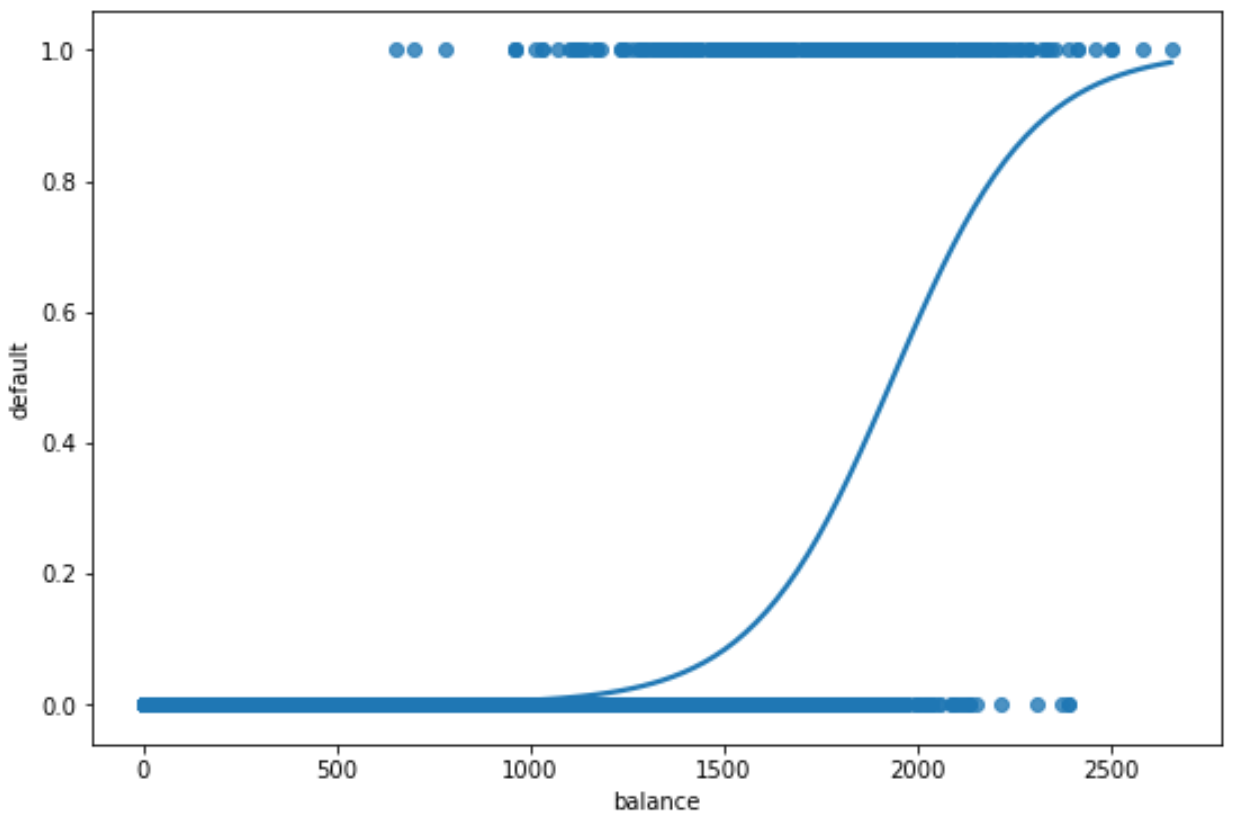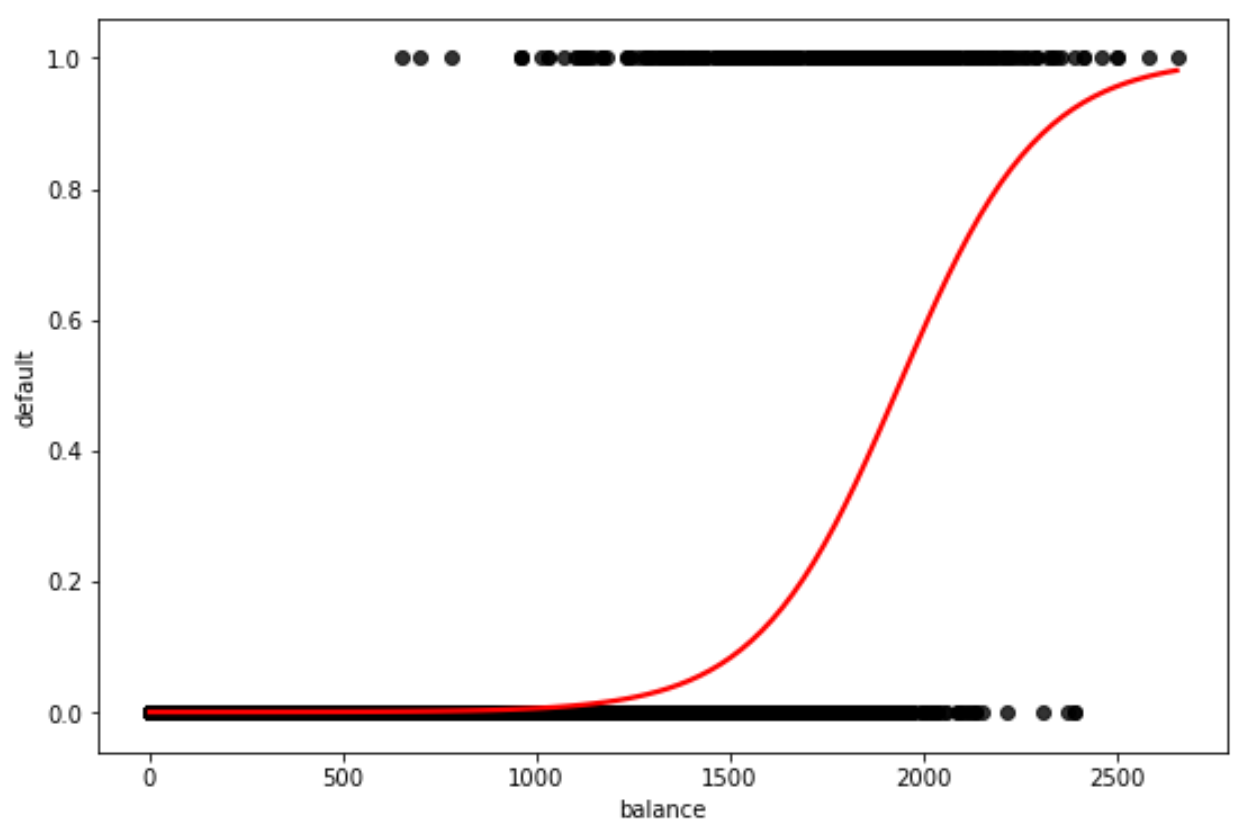如何在python中绘制逻辑回归曲线
您可以使用seaborn数据可视化库的regplot()函数在Python中绘制逻辑回归曲线:
import seaborn as sns sns. regplot (x=x, y=y, data=df, logistic= True , ci= None )
以下示例展示了如何在实践中使用此语法。
示例:用 Python 绘制逻辑回归曲线
对于此示例,我们将使用《统计学习简介》一书中的默认数据集。我们可以使用以下代码来加载并显示数据集的摘要:
#import dataset from CSV file on Github url = "https://raw.githubusercontent.com/Statorials/Python-Guides/main/default.csv" data = pd. read_csv (url) #view first six rows of dataset data[0:6] default student balance income 0 0 0 729.526495 44361.625074 1 0 1 817.180407 12106.134700 2 0 0 1073.549164 31767.138947 3 0 0 529.250605 35704.493935 4 0 0 785.655883 38463.495879 5 0 1 919.588530 7491.558572
该数据集包含 10,000 人的以下信息:
- 违约:表明个人是否违约。
- 学生:表明个人是否是学生。
- 余额:个人持有的平均余额。
- 收入:个人的收入。
假设我们要构建一个逻辑回归模型,使用“平衡”来预测给定个人违约的概率。
我们可以使用以下代码绘制逻辑回归曲线:
#define the predictor variable and the response variable
x = data[' balance ']
y = data[' default ']
#plot logistic regression curve
sns. regplot (x=x, y=y, data=data, logistic= True , ci= None )

x 轴显示预测变量“余额”的值,y 轴显示预测的违约概率。
我们可以清楚地看到,均衡值越高,个人违约的概率就越高。
请注意,您还可以使用scatter_kws和line_kws来更改图中点和曲线的颜色:
#define the predictor variable and the response variable
x = data[' balance ']
y = data[' default ']
#plot logistic regression curve with black points and red line
sns. regplot (x=x, y=y, data=data, logistic= True , ci= None ),
scatter_kws={' color ': ' black '}, line_kws={' color ': ' red '})

请随意在图中选择您想要的颜色。
其他资源
以下教程提供有关逻辑回归的更多信息: